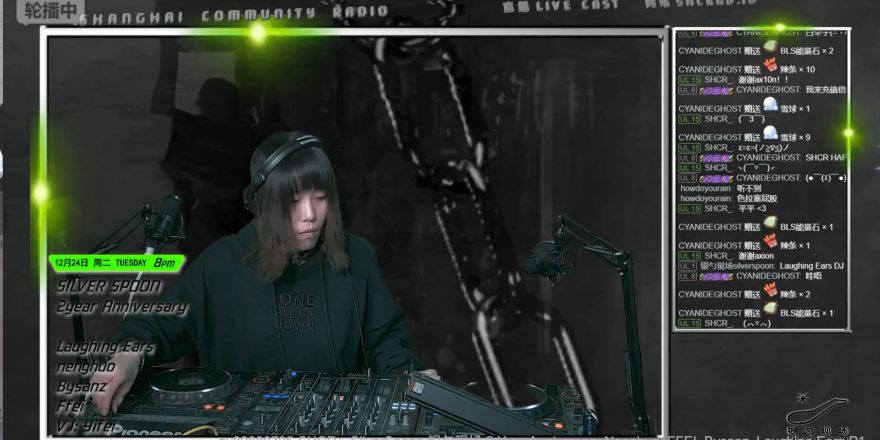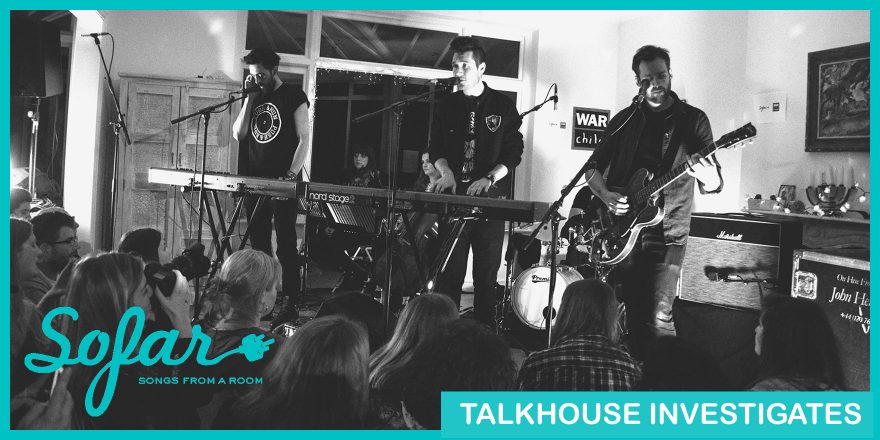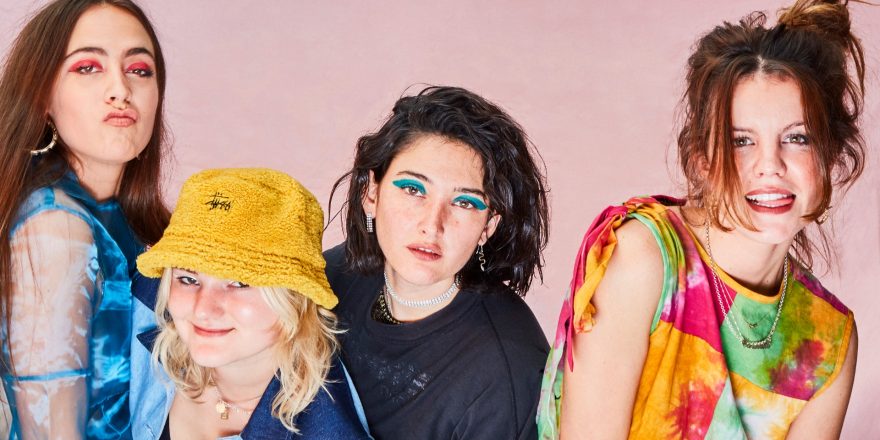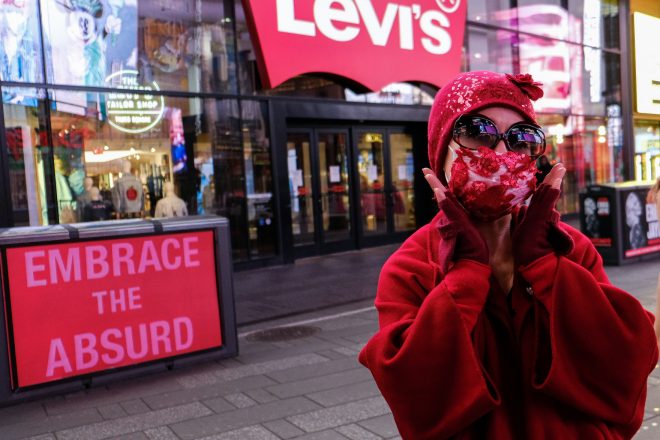In the midst of the music economy’s slow decline, the COVID-19 outbreak looks like it will deliver it a death blow. New York City implemented something very close to a “shelter in place” mandate, and all cultural institutions have shuttered for the foreseeable future. I just received an email with a cancelation notice for a gig in May, with more to follow. As the local scene atomizes to our remote broadcasting spaces, there’s a scramble for replacement income. Video lessons, Bandcamp sales, requests for emergency arts funding — I’ve even seen a call to reclassify freelance musicians as federally funded “cultural workers” that echoes the 1930s Depression era Federal Arts Project. It’s chaos.
Last week, which feels like many years ago now, I decided to speak with musicians and arts workers I know in Italy, China and South Korea — I have developed good friends there through my own travels for music — to try to understand what the hell happened, what kinds of unique scenarios they’ve lived through, and what their experiences might have to teach us a few weeks later. It’s complicated and sometimes terrifying, but it was fun. I recommend that you all make a bunch of phone calls to your friends stuck in these shutdown areas. The conversations brought me a lot of comfort. I hadn’t spoken to many of these people in years.
During my conversations I discovered unique reactions in Italy that were curious and illuminating, and China seems to have embraced the streaming connections more robustly than elsewhere. The Italian responses feel wonderfully esoteric to their own wild and wooly history. At the same time, I tried to figure out what this will look like for practicing musicians going forward. I’ve seen some rebooked tours already being advertised for August and September, but from what I’ve heard these rescheduled tours are premature. I like the positivity, but we are going to be far from normal for a long time, especially in the US.
When the Italian government and health agencies declared a nationwide lockdown on theaters and music spaces to combat the spread of COVID-19 on March 12, the DIY music community in Rome pushed back. Toni Cutrone, founder of the Roman solo project Mai Mai Mai and the owner of the performance venue La Fine told me, “The cultural class of Rome was the first thing affected by the government. Theaters, clubs, bars were shut down but the subways were still packed, the schools were full, everyone was working. It looked like they wanted to kill this side of social life. We all said, ‘Fuck it, we will do illegal parties, we’ll open anyway and try to keep the proper distance between everyone — we want to show that we can do this!’ But of course we quickly realized that this wasn’t about politics. We closed for the health of the community.”
Rome-based novelist Francesco Pacifico confirmed this, “At first the shut down felt like an injustice. Everything is symbolic in our culture. But COVID-19 is not symbolic. This is something different. I’m shitting my pants right now — but I will go back calling people fascists when this is over.”
Italian politics mingles a number of different flavors of oppression, from Catholic morality strictures to the post-World War II 1948 amnesty when thousands of fascists and their collaborators were reintegrated into all tiers of Italian society. “We never had a period of deNazification,” I was told by Freddie Murphy of the experimental duo Father Murphy. “Mussolini’s niece [Alessandra] was in parliament.” Trust between the Italian DIY communities in Rome and the government is non-existent. When the first restrictions related to COVID-19 initially came down and it was clear that young and healthy people were at an extremely low risk, a very brief surge of resistance surfaced.
But in the wealthy northern region of Lombardy that includes the city of Milan, where the virus is still peaking, the early pushback against a shutdown that started a few weeks before, on February 24, had no countercultural tone. Milan’s drive to keep the city’s cultural and capital business as usual was connected to economic production and content creation, as would suit Italy’s manufacturing region. Milan venues and musicians were trying to keep the economy alive, in the face of what seemed like a temporary productivity setback while the virus raged in the small town of Codogne, a mere 37 miles southeast.
Pacifico told me, “In Milan initially, there was this sense of, ‘Let’s keep things going because creating content and keeping a lively center makes for a good city.’ In Rome there’s more of a chasm between the mainstream and counterculture.” As a gesture of symbolic support, Nicola Zingaretti, the leader of the center-left Democratic party based in Rome, walked the streets of Milan and shook hands with citizens in solidarity during the short-lived campaign to keep the cultural centers in the North functioning in the midst of what is now considered a pandemic. Shortly after the visit, Zingaretti tested positive for COVID-19 and it’s assumed that he contracted the virus during that Milan trip. A picture of him smiling and shaking hands in a Milan street became a meme.
Alessandra Novaga, a Milan-based experimental composer and guitarist who also teaches high schoolers guitar on Skype now, said that even though Milan was close to the worst outbreak in Codogno, business continued while infections surged nearby. “We thought that this problem was happening to these people in some other place.” But when the February 24 cultural shutdown happened in Milan, despite the shock, no one considered the injustice of it. “I don’t generally like the government very much, but in this situation they did very well, considering that there were very few other examples to follow,” she continued.
In Rome, Pacifico told me, “[The general Roman anti-fascist reaction] might have been knee jerk but we’re coming off five years of every counter-cultural space getting shutting down. In Milan, the arts community and establishment are more on the same side.”
On a lighter note, there were a flurry of widely shared videos of Italians braving the quarantines with some lovely balcony serenades — a perfect viral moment of a creative hedge against the bleakness of quarantine. Freddie Murphy and Chiara Lee of Turin’s Father Murphy laughed as they told me, “It’s total cacophony when people go out on their balconies to sing. It was nice the first day but now it’s a nightmare. In our neighborhood it’s songs like ‘Wish You Were Here.’ Everyone should appreciate silence. In other neighborhoods they were only singing the national anthem. We’re worried about the increase of nationalism. The virus is affecting everyone as human beings.” They pause and groan. “They just started singing outside again.”
As New York shelters in place, I talked to a few China-based musicians and music business workers who have already been living that reality for weeks.
Josh Feola, a musician and writer who lived in Beijing and Shanghai for 11 years and just returned to the US about two weeks ago, told me, “The average American would view the Chinese response as a totalitarian nightmare, but I saw it as working as it should. When the epidemic became clear, older Communist Party members swung into action right away and started restricting movement and checking temperatures as people went in and out of housing blocks. There’s no way this would work in NYC. There’s a close correlation between the rapidity of the response and the degree that there’s a base layer of digital surveillance apparatus in place. There’s already an ambient awareness of the central government’s ability to make these rapid changes — for better or worse. That has developed in lockstep with the total digitalization of life in China. Phones track where you go and the app companies have relationships with the government that can be exploited at will.”
App companies like Alipay, which dominate retail commerce so much that most Chinese have all but stopped using cash, started to generate “health scores” on a scale of red (sick), yellow (possible danger), and green (healthy). As the population went through checkpoints, police had complete access to this app-generated health score and would treat individuals accordingly.
Whether there was any kind of pushback towards the government about performance restrictions, Feola said that, “The environment in China is already far more repressed. I didn’t see anything like this.”
Starting in 2017, the Chinese government started cracking down on DIY performance spaces and bars under the pretext of controlling drug use. Feola told me at a small Record Store Day event last April in Shanghai, police arrived at 11 PM and urine tested the men in the audience. Before the shock of the outbreak, the live-music situation in China was already degraded and the places left are obviously struggling. Some have closed for good — a Shenzhen venue called Hong Tang Guan Shekou Place has gone under as a result of the virus.
Some intrepid Chinese music companies are seeing this as an opportunity. Zhao Yue, the COO and co-founder of the independent Beijing-based label Merrie Records, told me that the quarantine has pushed them to fast-track their online streaming presence. Aside from running a record label, Merrie produces livestream shows mainly on the Chinese platform of bilibili.com. Since the outbreaks, they have produced shows that are loosely outlined and feature a number of different performers, all broadcasting from their own apartments. The shows are produced by the Merrie staff, are based on themes (the one happening on March 28 is all about food), and the performers are coached by the Merrie staff. Zhao Yue continues, “People are not just watching for the content, but they are watching because they like the engagement.” The Bilibili streams are interactive chat rooms where the music is just a small part. “These online events can never compete with a professionally edited live concert video, or a well-produced music video. But if you just play music in your bedroom you’ll never compete with the variety show format of our online sets. It’s sad, but pure audio is seen as a background thing now. It’s not stimulating enough for modern people. They want to get to know the musicians and how they look in their pajamas.”
Zhao Yue explained, “We are actually kind of thankful for this time. Under the pressure of the quarantine we were forced to move more events online.” Recent quarantine streams were sponsored by Be-Kind Bars (a version of Kind Bars sold in territories outside the US, Canada and UK), Sonos, URBANEARS Headphones, and other Chinese-based lifestyle brands. The performers receive no monetary compensation, but sometimes receive free products from their sponsors.
The Chinese streaming platforms have developed in a unique way outside of the Western ecosystem because most US-based social and streaming platforms are blocked in China. But musicians on these platforms are not getting paid well. Pan Hu, a drummer in the Britpop-style rock band Elenore told me about a recent quarantine streaming event, “We did one through TikTok. It was a big waste of time. My husband played guitar and I played some very simple rhythms and bells, and electronic drums. We made about 50 RNB [$7]. I should say though that we never looked at it as a way to make money. We did it for fun to connect with our fans during the outbreak.”
Feola said, “When the shutdown was first happening in China, we were all encouraged by the live streams, there was the sense of community connection that we were missing because we couldn’t go out. But it’s replacing income. It’s introducing an entire generation of people to the idea that music is free. Bands that play live will never get this income back.”
One of the most effective responses to the outbreak thus far has been South Korea’s. One of the worst hit areas outside of China (until the US), they never actually levied a shut down until this past weekend. I spoke with saxophonist and natural medicine doctor, Sunjae Lee who told me in detail how the South Korean response felt in Seoul. Information was collected from infected individuals’ GPS movements, CCTV monitoring and self-reported histories and then shared in real time via national text messages to the entire South Korean population. This kind of organization brings up tons of privacy concerns and could probably never be implemented in the US, but we do not even have a fraction of South Korea’s testing in place. Up until Sunday March 22, there was no official shut down of public gatherings or live performances in the country. There was a precipitous drop in audiences, but shows were still occuring. The public was able to support this because the South Korean health institutes were extremely aggressive with testing and tracking of the disease.
Jazz drummer Junyoung Song performed a show in a Seoul venue on March 18 and while the audience was about 25% the regular size, the band still was paid their regular fee of $200. The South Korean music economy was able to walk this razor’s edge between closure and partial openness through heavily investing in data and tracking. This scenario will never happen in the US nationwide, but perhaps individual cities can leverage something similar to keep the theaters open once we emerge from the shutdown.
If live performance is obliterated and live streaming income is just as paltry as other online revenue streams, then does anyone have a sense of when we can expect live shows to become viable again? I spoke at length with Seattle-based virologist and infectious diseases physician Dr. Joshua Schiffer about the live-music scenarios that could follow in the next few months. He explained that epidemics come in waves. If we get this first wave under control and start to open society up a little, new outbreaks will inevitably flare up and we will experience second and third waves until a vaccine is created. This could go on for many months. Dr. Andrea Siddu, MD/MPH with the Italian National Institute of Health told me, “If we have a vaccine in one year we’d be happy.” Schiffer said an 18-month window is more realistic and even though the outlook is generally favorable for a COVID-19 vaccine, there’s no guarantee that a vaccine is possible with this particular virus.
When are we going to be able to play shows again, and restore the only remaining stable income stream we have? Schiffer told me, “The best case scenario is a nimble response that is based on good data about the intensity of local infections. We’re experiencing something that’s brand new. Even the people who’ve thought about this scenario as their full-time job for many years can’t forecast where we’ll be in three months, six months, or two years particularly at the individual city level.”
When the virus had only just touched down in Seattle, Dr. Schiffer did an exercise with his sons about the risks of going to see a professional soccer game at CenturyLink Field on February 27. He was well aware that a major outbreak was about to occur in the city and did not wish to contribute to the spread of the virus to the at-risk elderly population, but trusted model projections that there were likely only several hundred cases in the four million person metropolitan area at that time. Using the available data points they were able to determine that there was a chance that anywhere from 0-5 people might be infected in a stadium crowd of 40,000. They decided as a family that given that mass physical distancing was on the horizon, it would be an acceptable risk to attend one final match, and they practiced some ad hoc social distancing at the game. If the game was a week later, they calculated anywhere from 0-10 people might have the virus in the stadium, and attending would not be advisable. Move the model ahead another week and there was a 100-percent chance you would have infected people in the stadium, and they would have definitely stayed home.
“Ideally we could hit a place where we’re testing frequently and have a very sensitive meter of what’s happening in every major municipality in the country. You could then comfortably believe that the chance there’s an infected person in the audience is low. You could take some precautions and figure out creative ways you can have a show where the contact between audience members is limited.”
He hypothesized a scenario where a band could look at the health information that was publicly available and say, “Well, we definitely can’t play Philly right now, but Miami would be no problem.”
He was clear that this was a best-case scenario. There are many factors necessary to make this viable. We would need transparent access to health information, wide availability of testing, a broad cultural acceptance of seeking testing for even mild symptoms of the common cold, a trustworthy government health service, and clear and sane guidelines for behavior.
Schiffer explained, “It’s impossible to make predictions. However, I would say that no way any shows will be permitted in the next three months, and I would be totally surprised if anything happens in the next six months. It is a really depressing thought and I hope I am wrong.”
A data-driven approach is the only way the music community will reconstitute live performances within six months.
In the meantime, there are a few ways that you can support artists and independent record labels. The latest Bandcamp.com campaign from March 20 generated $4.3 million for artists and labels during the shut down. The promotion is over, but it’s still the best place to support the performers and labels that desperately need it. Artists all over the world are streaming concerts on Instagram, YouTube, and Facebook live, and sometimes encourage people to donate to their Venmo and PayPal accounts. Fielding Hope, a senior producer at the London-based venue Cafe Oto, published an incredible list of experimental musicians who are available for lessons and consultations. There is a surfeit of knowledge and time right now, so it’s a perfect opportunity to get lessons from people you admire. As we wait for live concerts to materialize, you should explore the resources online. Stay inside, stay informed, and support who you can.
(Photo Credit: Josh Feola and Shanghai Community Radio)







